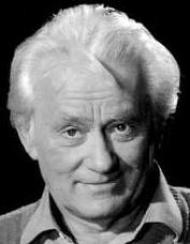George Charles de Hevesy (German: Georg Karl von Hevesy) (1 August 1885 – 5 July 1966) was a Hungarian radiochemist and Nobel laureate, recognized in 1943 for his key role in the development of radioactive tracers to study chemical processes such as in the metabolism of animals. He also co-discovered the element hafnium.
Early years
Hevesy György was born in Budapest, Hungary to a wealthy and ennobled Roman Catholic of Hungarian Jewish descent family, the fifth of eight children to his parents Lajos (Louis) Bischitz and Baroness Eugenia (Jenny) Schossberger (ennobled as "De Tornya"). Grandparents from both sides of the family had provided the presidents of the Jewish community of Pest. George grew up in Budapest and graduated high school in 1903 from Piarista Gimnázium. The family's name in the 1904 was Hevesy-Bischitz, and Hevesy later changed his own.
De Hevesy began his studies in chemistry at the University of Budapest for one year, and at the Technical University of Berlin for several months, but changed to the University of Freiburg. There he came in contact with Ludwig Gattermann. In 1906 he started his Ph.D. thesis with Georg Franz Julius Meyer, acquiring his doctorate in physics in 1908. In 1908 Hevesy got a position at the ETH.
Research
In 1923 de Hevesy co-discovered hafnium (72Hf) (Latin Hafnia for "Copenhagen", the home town of Niels Bohr), with Dirk Coster. Mendeleev's periodic table in 1869 put the chemical elements into a logical system, however there was missing a chemical element with 72 protons. On the basis of Bohr's atomic model Hevesy came to the conclusion that there must be a chemical element that goes there. The mineralogical museum of Norway and Greenland in Copenhagen furnished the material for the research. Characteristic X-ray spectra recordings made of the sample indicated that a new element was present. This earned him the 1943 Nobel Prize in Chemistry.
Hevesy was offered and accepted a job from the University of Freiburg. Supported financially by the Rockefeller Foundation, he had a very productive year. He developed the X-ray fluorescence analytical method, and discovered the Samarium alpha-ray. It was here he began the use of radioactive isotopes in studying the metabolic processes of plants and animals, by tracing chemicals in the body by replacing part of stable isotopes with small quantities of the radioactive isotopes. In 1923, Hevesy published the first study on the use of the naturally radioactive 212Pb as radioactive tracer to follow the absorption and translocation in the roots, stems and leaves of Vicia faba, also known as the broad bean.

